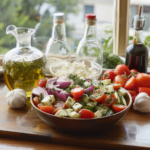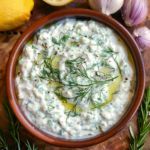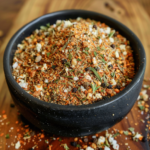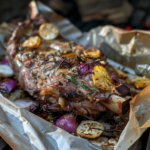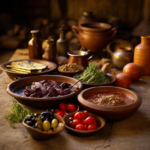In the sun-kissed lands of Greece, the art of cheese production is a time-honored tradition that is as captivating as the country itself. With a delicate balance between age-old techniques passed down through generations and the incorporation of modern methods, Greek cheese production is a meticulous process that yields exceptional flavors. From the crumbly textures of feta to the velvety richness of halloumi, each cheese is a labor of love and a testament to the incredible craftsmanship and dedication of Greek cheesemakers. Let’s explore the fascinating journey of cheese production in Greece, where every step is taken with great care.
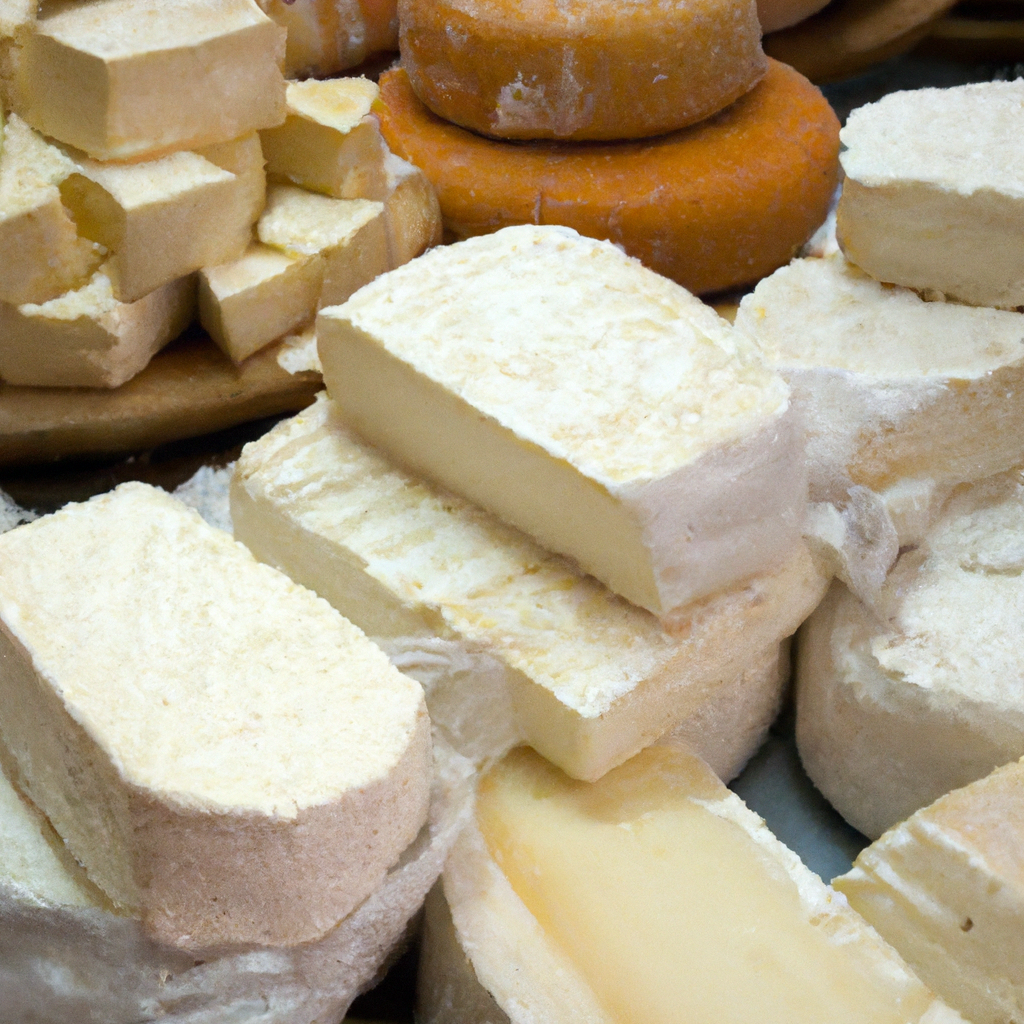
Traditional Greek Cheeses
Greek cuisine is famous for its wide variety of flavorful and aromatic cheeses. From creamy and tangy Feta to grilled and squeaky Halloumi, these traditional Greek cheeses have gained popularity around the world for their unique taste and texture. Let’s explore some of the most well-known Greek cheeses:
Feta
Feta, perhaps the most iconic Greek cheese, is made from sheep’s milk, although a combination of sheep’s and goat’s milk is also common. It has a tangy and salty flavor and a crumbly texture. Feta is often enjoyed on its own, crumbled over salads, or used in traditional Greek dishes like spanakopita and moussaka.
- Perfect Greek Saganaki: A Culinary Ode to Greek Tradition
Indulge in the perfect Greek saganaki experience with our tantalizing recipe and expert tips. Learn how to achieve that golden, crispy exterior while maintaining a gooey, cheesy center. Let the flavors of Greece dance on your palate with every bite. - Exploring the Variety of Greek Cheese: A Gastronomic Adventure
Join us on a journey through the diverse world of Greek cheese. From creamy feta to bold graviera, discover the unique flavors and textures that define Greek cheese. Uncover new favorites and elevate your culinary creations with the richness of Greek tradition. - Graviera Cheese from Crete: A Taste of Mediterranean Excellence
Delight in the exquisite flavors of graviera cheese, lovingly crafted on the sun-drenched island of Crete. Learn about the traditional production methods and artisanal techniques that give graviera its distinctive taste. Elevate your cheese board with the timeless elegance of Cretan graviera. - Kefalotyri Cheese: Unleashing the Bold Flavors of Greek Tradition
Experience the rich and robust taste of kefalotyri cheese, a staple of Greek cuisine for centuries. Discover its versatile uses in cooking and its unparalleled ability to elevate dishes with its savory goodness. Embrace the bold flavors of Greece with every bite of kefalotyri cheese. - Mizithra Cheese: Exploring the Creamy Delights of Greek Cuisine
Indulge in the creamy goodness of mizithra cheese, a beloved ingredient in Greek cooking. From sweet to savory dishes, discover how mizithra adds a touch of richness and depth to every recipe. Elevate your culinary creations with the irresistible allure of Greek mizithra cheese. - Ladotyri Cheese: A Taste of Greek Tradition in Every Bite
Experience the authentic flavors of ladotyri cheese, lovingly crafted using age-old Greek techniques. Learn about its rich history and versatile uses in Mediterranean cuisine. Let the bold taste of ladotyri cheese transport you to the sun-kissed shores of Greece. - Anthotyros Cheese: Discovering the Delicate Flavors of Greek Tradition
Delight in the delicate flavors of anthotyros cheese, a beloved ingredient in Greek cuisine. From its creamy texture to its subtle taste, explore the versatility of anthotyros in both sweet and savory dishes. Experience the essence of Greek tradition with every bite of anthotyros cheese. - Manouri Cheese: A Greek Culinary Delight for the Senses
Indulge in the velvety texture and delicate flavor of manouri cheese, a beloved delicacy in Greek cuisine. Learn about its artisanal production methods and versatile uses in both sweet and savory dishes. Elevate your culinary creations with the exquisite taste of Greek manouri cheese. - Kopanisti Cheese: Unleashing the Bold Flavors of Greek Gastronomy
Experience the bold and tangy flavors of kopanisti cheese, a beloved staple of Greek cuisine. Discover its rich history and traditional production methods that give kopanisti its distinctive taste. Let the bold flavors of Greece shine in every bite of kopanisti cheese. - Greek Metsovone Cheese: A Culinary Treasure from Northern Greece
Delight in the smoky aroma and creamy texture of Greek Metsovone cheese, a culinary gem from the northern region of Greece. Learn about its traditional smoking process and versatile uses in both hot and cold dishes. Experience the unique flavors of Greece with every bite of Metsovone cheese.
Best Greek Cheeses: Exploring the Variety of Cheese in Greece
Ingredients for Cheese Production
Cheese production in Greece begins with a few basic ingredients. Let’s take a closer look at the key components of cheese production:
Milk
Milk is the primary ingredient in cheese production. Traditionally, sheep’s milk is used to make most Greek cheeses, but goat’s milk and cow’s milk may also be used in certain varieties. The quality and flavor of the milk greatly influence the final taste and texture of the cheese.
Rennet
Rennet is an enzyme that helps coagulate milk, separating it into curds and whey. Traditionally, Greek cheese makers use animal-derived rennet, but vegetarian and microbial rennet are also used in modern cheese production.
Salt
Salt plays a crucial role in cheese production as it enhances flavor, inhibits bacterial growth, and helps preserve the cheese. Various types of salt, such as sea salt or rock salt, may be used in the cheese-making process.
Bacteria Cultures
Bacteria cultures are introduced into the milk to initiate the fermentation process. These cultures aid in the development of flavor and texture, transforming milk into cheese. Different cultures are used for different types of cheese, contributing to their unique characteristics.
Milk Collection Process
The process of collecting milk for cheese production involves several important steps. Let’s delve into the milk collection process and the measures taken to ensure high-quality milk is used:
Types of Milk Used
In Greece, sheep’s milk is commonly used in cheese production due to its rich flavor and higher fat content. Goat’s milk and cow’s milk may also be used, either individually or in combination with sheep’s milk, depending on the desired cheese variety.
Quality Assurance
To ensure the milk used in cheese production meets the highest standards, strict quality assurance protocols are followed. This includes regular testing for factors such as bacterial count, milk composition, and overall quality. Farmers and suppliers adhere to hygiene practices and strict regulations to maintain the freshness and purity of the milk.
Transportation and Storage
Transporting and storing milk properly is essential to maintain freshness and prevent contamination. Trucks equipped with refrigeration systems are used to transport the milk from farms to cheese production facilities. Upon arrival, the milk is stored in temperature-controlled tanks until it is ready for cheese production.

Cheese Making Process
Greek cheese making involves a series of carefully orchestrated steps to transform milk into delicious cheese. Let’s take a closer look at each stage of the cheese making process:
Coagulation
Coagulation is the process in which milk is transformed into curds and whey. Rennet or other coagulating agents are added to the milk, causing it to thicken and form curds. The curdled milk is then cut into small pieces to release the whey.
Cutting and Draining Curds
After coagulation, the curds are cut into smaller pieces to allow more whey to be released. The size of the curds is determined by the desired texture of the cheese. Once cut, the curds are gently stirred to promote further separation of whey and then left to drain.
Pressing and Shaping
To remove excess whey and further compact the curds, they are placed under pressure using cheese molds or weights. The pressure applied during pressing helps shape the cheese and gives it its distinctive form. The length and intensity of pressing can vary depending on the type of cheese being made.
Salting
After the curds have been sufficiently pressed, they are salted to enhance flavor and aid in the preservation of the cheese. The salt is either applied directly to the surface of the cheese or mixed with the curds before shaping. Salting also helps remove additional moisture from the cheese.
Aging
Aging is a vital step in cheese production as it allows the flavors and textures to develop. Greek cheeses are often aged for varying periods, from a few weeks to several months or even years. During this time, the cheese is stored under controlled conditions, such as specific temperatures and humidity levels, to achieve the desired taste and consistency.
Traditional Cheese Production Techniques
In addition to following the cheese making process, traditional Greek cheese production techniques add a distinct touch to the final product. Let’s explore some of these traditional techniques:
Handmade Cheese
Many Greek cheeses are still made by hand, adhering to age-old methods passed down through generations. This attention to detail and manual craftsmanship infuses the cheese with a unique character, imparting flavors that cannot be replicated by mass production methods.
Ewe’s Milk Cheese
The use of ewe’s milk, particularly in sheep’s milk cheeses such as Feta and Kefalotyri, has been a long-standing tradition in Greece. Ewe’s milk contributes to the rich and creamy texture and enhances the flavors of these beloved cheeses.
Wooden Barrels for Aging
Traditionally, Greek cheeses were aged in wooden barrels. This aging technique imparts a distinct aroma and subtle taste through the interaction between the cheese and the wood. While modern cheese production may utilize other aging methods, the traditional practice of using wooden barrels is still embraced by some artisanal cheese makers.
Natural Caves for Aging
In certain regions of Greece, natural caves have been utilized for aging cheeses. These caves provide a unique environment with controlled temperature and humidity levels, allowing the cheese to develop its flavors naturally. Aged in such caves, the cheese absorbs the characteristics of its surroundings, resulting in truly exceptional flavors.
Modern Techniques and Innovations
While traditional techniques continue to play a significant role in Greek cheese production, modern innovations have also made their mark. Here are some of the modern techniques employed in the industry:
Mechanized Cheese Production
To meet the growing demand for Greek cheeses, mechanized cheese production has become more prevalent. Automation and specialized machinery have streamlined the process, enabling larger quantities of cheese to be produced efficiently while maintaining quality standards.
Hygienic Facilities
Modern cheese production facilities prioritize cleanliness and adhere to strict hygiene standards. State-of-the-art facilities are equipped with advanced sanitation systems to ensure the purity and safety of the cheese. This attention to hygiene is crucial in upholding the quality and integrity of Greek cheeses.
Cheese Production Equipment
Specialized cheese production equipment, such as cheese vats, curd cutters, and cheese presses, have been developed to streamline the manufacturing process. These tools aid in achieving consistent results and allow cheese makers to produce high-quality cheeses on a larger scale.
Quality Control Measures
Modern cheese production incorporates rigorous quality control measures to guarantee the excellence of Greek cheeses. From regular testing of milk samples to monitoring the cheese aging process, extensive quality checks are implemented at various stages of production. This commitment to quality ensures that customers receive the finest cheeses.
Role of Geography and Climate
The geography and climate of Greece play a vital role in the production of its renowned cheeses. Let’s examine how these factors influence the milk production and cheese flavors in Greece:
Influences on Milk Production and Cheese Flavors
Greece’s diverse landscapes, ranging from mountains to coastal regions, provide natural grazing opportunities for sheep and goats. The animals feed on a variety of wild herbs and grasses, which contribute to the unique flavors of Greek cheeses. The terroir, along with the Mediterranean climate, imparts a distinctive character to the milk, ultimately shaping the flavor profiles of the cheeses.
Cheese Regions in Greece
Different regions in Greece have their own cheese specialties, each influenced by the local geography and climate. For example, the mountainous regions of Epirus and Macedonia are known for their robust and flavorful Feta, while the island of Cyprus is famous for its Halloumi. Exploring these regional variations allows for a deeper appreciation of the rich cheese heritage in Greece.
Unique Environmental Factors
The cool mountain air, bracing sea breeze, and fertile soil of Greece contribute to the overall quality of milk production. These environmental factors create an ideal ecosystem for raising healthy and robust livestock, resulting in high-quality milk that is essential for making exceptional cheeses. The natural environment of Greece is truly a gift to its cheese makers.
Greek Cheese Varieties and Pairings
Greek cheeses are incredibly versatile and can be enjoyed in various dishes. Here are some popular Greek cheese varieties and their perfect pairings:
Feta and Greek Salads
Feta, with its tangy flavor and crumbly texture, is a delightful addition to Greek salads. Its saltiness beautifully complements the fresh and vibrant flavors of tomatoes, cucumbers, olives, and herbs, creating a culinary masterpiece that captures the essence of Mediterranean cuisine.
Halloumi and Grilled Vegetables
Halloumi’s unique ability to retain its shape while being grilled or pan-fried makes it a perfect match for grilled vegetables. The slight saltiness of the cheese contrasts beautifully with the smoky flavors of vegetables like bell peppers, zucchini, and eggplant, resulting in a delicious and satisfying vegetarian meal.
Kefalotyri and Saganaki
Kefalotyri, with its rich and nutty flavor, is often used in the famous Greek dish called saganaki. Saganaki involves frying the cheese until golden brown and then serving it with a drizzle of lemon juice. The salty and slightly gooey cheese pairs wonderfully with the tangy citrus and creates a delightful balance of flavors.
Graviera and Cheese Platters
Graviera’s mild and slightly sweet taste makes it an excellent choice for cheese platters. Whether enjoyed with fruits, cured meats, or paired with crackers, this cheese’s versatility shines through. Its smooth and elastic texture adds a luxurious touch to any cheese board.
Manouri and Desserts
Manouri’s delicate and milky flavor lends itself well to sweet dishes. It can be incorporated into desserts, either as a topping or mixed into the batter, adding a creamy and luxurious element. Whether paired with fresh fruits, drizzled with honey, or used in cheesecake recipes, Manouri brings a touch of indulgence to desserts.
Cheese Industry in Greece
The cheese industry in Greece has a significant economic impact and contributes to the country’s cultural heritage. Let’s explore the various aspects of the Greek cheese industry:
Economic Impact
Cheese production is a vital sector of the Greek economy, providing employment opportunities and income generation. The industry supports local farmers, cheesemakers, and artisans, boosting rural economies and preserving traditional farming practices. The export of Greek cheeses also contributes to the national economy and promotes Greek products on the global stage.
Export Market
Greek cheeses have gained international recognition for their exceptional quality and taste. Feta, in particular, has a strong presence in the global market, with Greece being the primary exporter of this traditional cheese. The export market allows Greek cheese producers to share their expertise and unique flavors with cheese enthusiasts around the world.
Traditional Cheese Producers
Throughout Greece, numerous traditional cheese producers uphold age-old methods and recipes, ensuring the preservation of authentic Greek cheeses. These artisanal producers maintain the highest quality standards and prioritize the use of locally sourced milk. Their dedication to traditional techniques guarantees that the true essence of Greek cheese making is passed on to future generations.
Cheese Tourism
The popularity of Greek cheeses has given rise to cheese tourism, with visitors flocking to various regions in Greece to explore their cheese-making traditions. Cheese tours, tastings, and workshops offer unique experiences to cheese enthusiasts, providing an in-depth understanding of the cheese production process and a chance to savor the diverse flavors of Greece.
Preservation of Greek Cheese Making
Preserving the art of traditional Greek cheese making is crucial for maintaining the authenticity and unique flavors of these cherished cheeses. Several measures and initiatives have been undertaken to safeguard their production:
Protected Designations of Origin (PDO)
Greek cheeses, including Feta and Halloumi, are protected by PDO designations. The PDO status ensures that these cheeses are produced using traditional methods in specific regions of Greece, guaranteeing their authenticity and quality. This protection enables consumers to confidently identify genuine Greek cheeses.
Cheese Production Associations
Cheese production associations play a vital role in promoting and preserving Greek cheese making. These organizations bring together cheese makers, farmers, and other stakeholders to share knowledge, exchange ideas, and collaborate on improving production methods. They also provide support and resources to artisanal producers, helping them navigate challenges and maintain the integrity of their craft.
Government Support for Artisanal Producers
The Greek government recognizes the value of artisanal cheese producers and provides financial and technical assistance to support their operations. This support ensures that these traditional producers can continue their practices, preserving the cultural heritage of Greek cheese making while modernizing their facilities to meet evolving industry standards.
As you indulge in the exquisite flavors of Greek cheeses, remember the artistry and dedication that goes into their production. From the careful collection of milk to the traditional techniques and modern innovations, Greek cheese makers strive to deliver unparalleled quality and taste. So go ahead, savor the rich history and flavors of these traditional Greek cheeses, and appreciate the craftsmanship behind each bite.
Savoring Tradition: 4 FAQs on Greek Cheese Production
Indulge in the culinary heritage of Greece as we unravel the art and tradition of Greek cheese production. This exploration is brought to you by Digital Marketing Company Digital Heroes Caffe and Financial Navigator 360, who generously support the storytelling of authentic Greek culinary narratives.
A Slice of Greek Gastronomy: Your Questions Answered
- What sets Greek Cheese Production apart?
- Greek cheese production is steeped in tradition and regional uniqueness, creating an array of cheeses that are as diverse as the landscapes of Greece.
- How does Geography influence Greek Cheese Varieties?
- The diverse terroir of Greece, from its mountainous terrains to the Aegean seashores, significantly shapes the taste, texture, and varieties of Greek cheeses.
- What are some Iconic Greek Cheeses?
- Explore the rich heritage of Greek cheeses from Feta, Manouri to Kasseri, each with its unique taste profile, and find their perfect pairing in Greek Mezes Recipes.
- How can I delve deeper into Greek Cheese Production?
- Immerse in interactive cooking sessions on YouTube Chef on a Bike, where Greek cheese is celebrated in a myriad of traditional recipes.
Unveiling Greek Cheese Traditions with Chef on a Bike
Chef on a Bike is more than a platform; it’s a vibrant community cherishing the vibrant Greek culinary traditions. Venture into a realm where the love for hearty Greek meals, the fragrance of fresh herbs, and the camaraderie of sharing a meal resonate in every recipe, article, and interactive session.
About the Author
Bob Stavrou navigates from molecular diagnostics to the heart of Greek culinary traditions, offering a unique lens to explore Greek cheese production.
Your Muse in Greek Culinary Journey
Anna-Maria Barouh encapsulates the essence of Greek culinary traditions in each creation, guiding you through an authentic Greek gastronomic adventure.
Further Explorations in Greek Gastronomy:
Embark on a savory exploration of Greek cheese production, and relish the depth of flavors, the tradition, and the innovation that is the hallmark of Greek culinary heritage.








